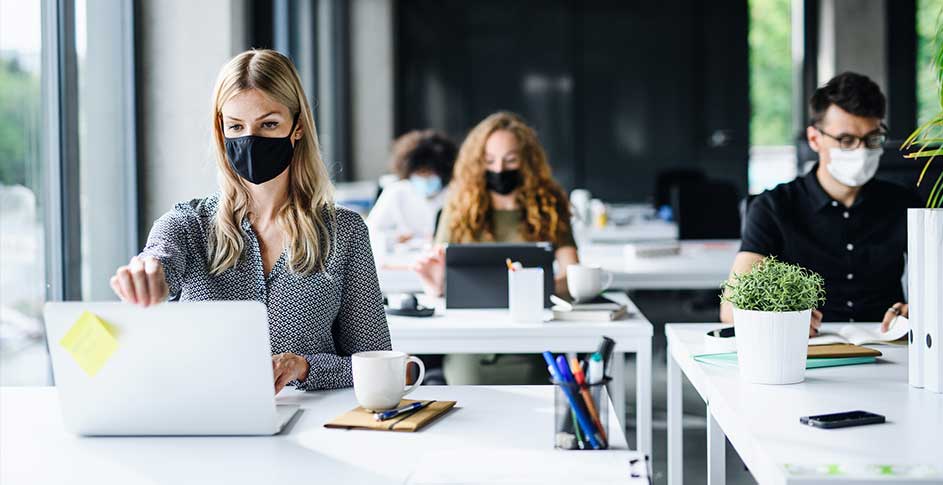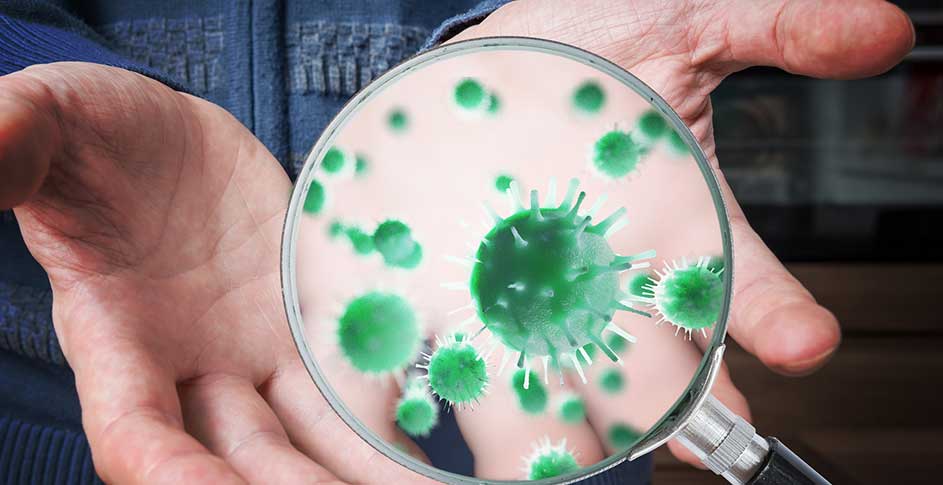As the world continues to face looming environmental threats such as increased air pollution, wildfires, pandemics, and changing weather patterns, it’s increasingly essential for businesses and consumers alike to attend to the quality of indoor air. To fight these air threats, many look toward alternative (and rather creative) solutions. However, it is important to look at such methods in light of which contaminants they actually address and whether a creative delivery method contributes positively to efficacy. Below is a brief commentary on 3 such methodologies.
1. Wearable Purifiers
Several companies have released wearable air purifiers that claim to be effective in removing pollutants from one’s breathing zone. One of these devices uses 2 HEPA filters, which appear to make it the equivalent of an N95 respirator with some extra bells and whistles.
Another highly-advertised wearable purifier does not form a tight seal over the mouth but merely blows filtered air over the face. Without data on the fluid dynamics of such a method, we remain skeptical of its efficacy. At the very least, it is not intended to be used as a response to pandemic viruses but merely air pollution.
A similar design uses a combination of HEPA filtration and UV light. This is intended to address viruses by its manufacturer. However, even if the fan is powerful enough to exclude nontreated air from the breathing zone (something which remains to be seen,) the device lacks a method for adsorbing VOC gasses.
Thus, it is important for consumers to understand which contaminants these devices address (and how) before making an investment.
2. Photocatalytic Paint
Another emerging purification technology is photocatalytic paint. These titanium-dioxide-based paints, when they encounter sunlight, release reactive molecules that inactivate viruses, bacteria, mold spores, and certain VOC gases. However, a Chinese study recently confirmed that such paints have the same problem as early-generation photocatalytic purifiers — while reacting with VOC gases, these paints have the potential to “generate and release other toxic compounds.” They also have the potential to release titanium dioxide nanoparticles. One final obvious downside of photocatalytic paint is that it needs to be exposed to sunlight; therefore, such a method doesn’t appear to operate at night or in rooms facing away from the sun.
3. Homeopathic Solutions
In recent years, there has been a growing trend of using homeopathic solutions, such as beeswax candles, plant-based air purifiers, plants, or essential oil diffusers to clean the air in our homes. While these alternatives may seem like they provide a natural and effective way to purify the air, the truth is more complicated. As we’ve discussed previously, the benefits of plants and plant-based purifiers are often minimal. Meanwhile, essential oil diffusers release more VOC gases into the air (albeit pleasant-smelling ones.) A recent study found that essential oil diffusers negatively impacted certain areas of cognition, such as impulse control and memory sensitivity; however, it did improve the participants’ reaction time. Although a single unscented beeswax candle, with proper ventilation, doesn’t pose an air quality threat, it isn’t improving air quality as any form of combustion can generate indoor particulate matter. While it may be tempting to opt for these "natural" methods, it's critical to weigh the potential problems against the minimal benefits before making any permanent decisions.
The Importance of Insisting on Data
As air quality problems increase, so will the demand for creative solutions. While many of these methods address one or two classes of contaminants, they do not eliminate the need for additional layers of air quality intervention. Also, such solutions are often too new to provide detailed scientific data to back up their claims.
If you’re looking for a solution supported by hard data and specific about the contaminants it addresses (bacteria, viruses, mold spores, and VOC gases,) look no further than ActivePure. ActivePure® Technology provides 24/7 protection for your space and peace of mind for your business.
Visit our FAQ page for more information on how ActivePure Technology can assist your organization in achieving its internal environmental (and financial) goals.



